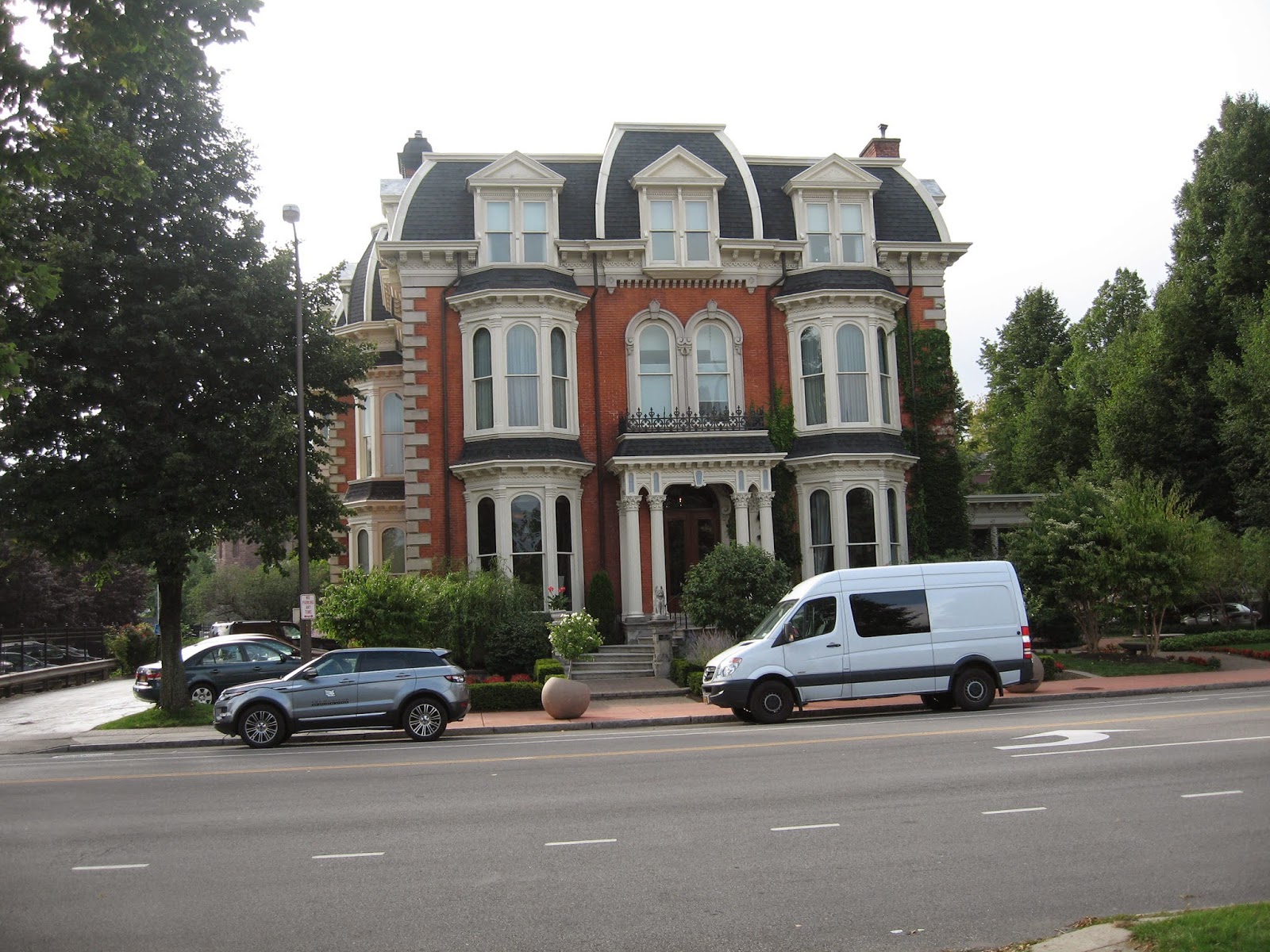We visited Buffalo in September of this year well before the historic November snow fall. It's never been on my list of top 10 cities to visit but in 2012 it was the site of the National Trust for Historic Preservation's annual meeting so my interest was piqued.
I did my research before arriving and we went down a check list clicking off some of the city's most impressive architecture and historic sites.
This house has a fascinating story to tell though not about the Ansley Wilcox family who owned the home but instead about one day in history - the day Theodore Roosevelt was sworn in as President of the United States in the first floor library.
On Sept 6, 1901 while greeting the public at the Pan American Expo President Mckinley was shot by an anarchist. Vice President Roosevelt immediately traveled to Buffalo. After surgery President Mckinley rallied and the surgeons were certain that a complete recovery would soon follow. Roosevelt decided to join his family for a vacation in the Adirondack Mountains. Three days later he was urgently called back to Buffalo. The President was near death.
In his haste to reach Buffalo Roosevelt had not packed his formal attire. For the swearing in ceremony he borrowed clothes from Wilcox, the home's owner and an old friend.
Only one photograph of the day was ever taken and that was outside on the front porch prior to the swearing in ceremony. Once inside the small library the two photographers present got into a scuffle while jockeying for position. Roosevelt threw them out.
This historic site has an unusual tour. It recreates sights, sounds and smell begining with the apparent carnival like atmosphere of the Pan American Expo. Then as you enter the dining room you smell the aroma of coffee - a favorite drink of Roosevelt's.
Here's a few photo's from some of our other stops in Buffalo.
 |
| Frank Lloyd Wright's Darwin D. Martin House Complex |
 |
| Prudential(Guaranty) Office Building Architect Louis H Sullivan All-Steel Frame with Terra Cotta Veneer Built 1895 |
 |
| The Mansion of Delaware Ave ! our hotel |




















